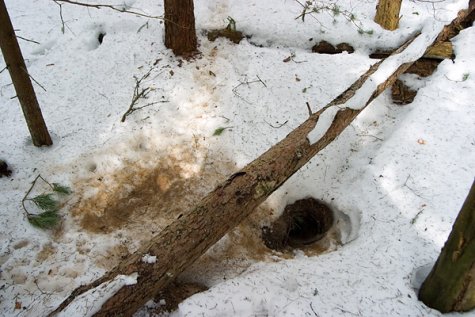Badger has been out to sniff the air
Photo: Sven Zacek, www.zacekfoto.ee
Translation: Liis
| Badger | Mäger |
With the snow that fell in November and stayed on the ground silence fell too around the badger dens, or setts. Even the den entrances, with diameters of some 20 centimetres, were closed with leaf and moss plugs.
Setting up the nest “fortresses“ is easiest in hummocky landscapes with sandy soil and the groundwater rather deep down. Southern Estonia may be mentioned as an example, but these structures are everywhere on the mainland, in some places densely, in others more sparsely. Beavers started to populate Saaremaa about 50 years ago, and a strong population has developed there since then. An estimate of their number would be over 3 000 individuals.
The communally living badgers spend the larger part of their lives in the dens, the winters in large and old ones with several litters together. The dens are lined with leaves and moss. During the winter sleep, or torpor, they move around a little in the den system, they change their places, and when necessary go to side tunnels of the passages for “toilet business“, although the body functions have slowed down. Badgers hold themselves to be cleanly creatures.
Female badgers will begin giving birth quite soon. The newly-born are blind, and have a grey, silky fur. The eyes will open at about 5 weeks and female badgers will bring their young out from the den at about 8 weeks old.
Badgers are not very fertile; usually there are 2-3 cubs and the next birthing of the badger sow may not be until after a couple of years since the newly-born are dependent on her until autumn and often during the whole first winter.









